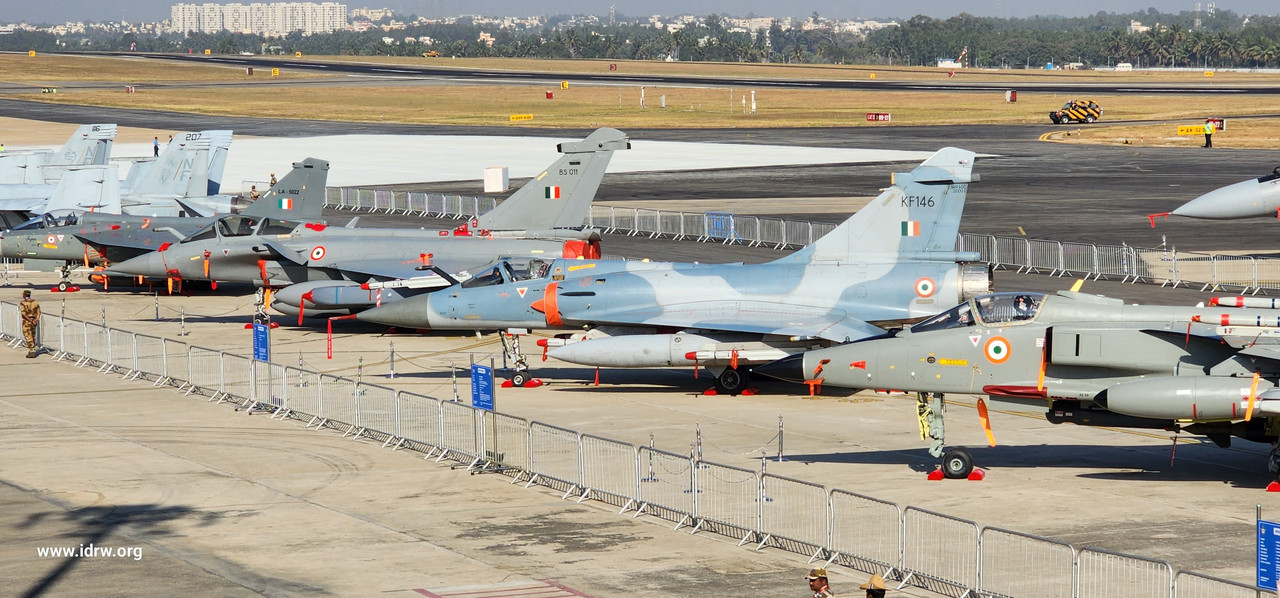SOURCE: RAUNAK KUNDE / NEWS BEAT / IDRW.ORG

In the late 1990s and early 2000s, the Indian Air Force (IAF) was on a quest to enhance its fighter jet fleet with a proven performer, particularly the upgraded Mirage 2000-5. This quest was fueled by the superior performance of the Mirage 2000H during the Kargil War.
However, the journey to procure 126 Mirage 2000-5 fighter jets, ideally to be locally produced, encountered significant hurdles due to bureaucratic red tape and cost concerns, leading to a broader tender process that eventually delayed the acquisition for decades.
The Mirage 2000H, procured by the IAF in the mid-1980s, had demonstrated its capabilities effectively during the Kargil War. The French Dassault Mirage 2000-5 was an upgraded variant, boasting advanced avionics, radar systems, and improved combat performance. Given its track record, the IAF was keen to expand its fleet with the Mirage 2000-5, envisioning a blend of fly-away units and locally manufactured aircraft through Hindustan Aeronautics Limited (HAL).
Despite the IAF’s preference, the procurement process was entangled in bureaucratic red tape. The Indian bureaucracy insisted on a comprehensive tender process, inviting proposals from various countries, including the United States, which had not previously supplied fighter jets to India. This insistence stemmed from concerns over the unit cost of the upgraded Mirage 2000-5, which was estimated to be between $73 million and $78 million per unit for French-built aircraft. Indian-built units were projected to cost slightly more, but just under $80 million each.
This cost was significantly higher than the original Mirage 2000H, which had been procured at approximately $40 million per unit. The deal intended to include 40 aircraft in fly-away condition and 110 to be licensed and manufactured by HAL with complete technology transfer. However, the high cost of the upgraded variant raised alarms among Indian bureaucrats, prompting them to seek potentially cheaper alternatives.
When the Soviet Union learned of the potential deal with France, it intervened by offering the MiG-29A at a much lower cost. The IAF became the first export customer of the MiG-29A, which was developed in response to the American F-16. The MiG-29A’s unit cost of $20 million, nearly half that of the Mirage 2000H, appealed to both the IAF and Indian bureaucrats. Consequently, the original Mirage 2000H procurement plans were shelved to save money, setting a precedent that would influence future decisions.
The bureaucratic preference for an open tender culminated in the formulation of the Medium Multi-Role Combat Aircraft (MRCA) tender. This process aimed to explore various fighter jet options from different manufacturers. However, this broader approach led to prolonged evaluations, negotiations, and delays.
Fast forward to 2024, the acquisition of the Mirage 2000-5 or its equivalent remains unresolved. Meanwhile, the Rafale, another French fighter jet, was eventually selected to replace the envisioned Mirage 2000-5 fleet. Ironically, the Rafale’s cost per unit is nearly double what the Mirage 2000-5 would have cost India had the deal been finalized in the early 2000s.
The decision to stall the Mirage-2000-5 upgrade in the name of cost-saving backfired in the long run. Fast forward to 2024, the deal remains unfulfilled, and India operates jets like the Rafale, which come at a much higher price tag compared to the proposed Mirage-2000-5.
This turn of events raises questions about the true cost-effectiveness of bureaucratic processes that prioritize short-term savings over long-term strategic advantages. The IAF’s vision for a more potent domestic fighter jet fleet through the Mirage-2000-5 upgrade was ultimately sacrificed, potentially leading to a more expensive procurement path in the future.
NOTE : Article cannot be reproduced without written permission of idrw.org in any form even for YouTube Videos to avoid Copy right strikes. Websites doing illegal reproductions will get DMCA and Legal Notices.